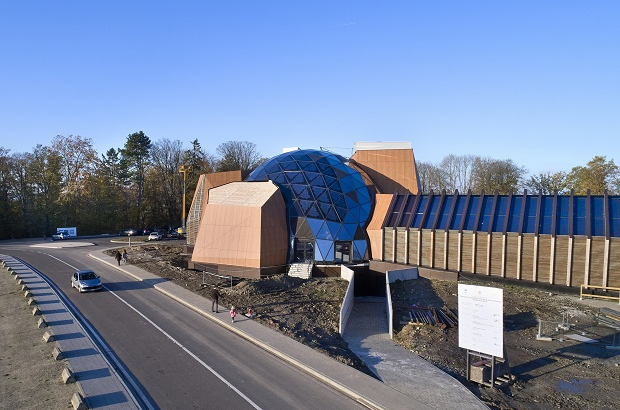- Daily & Weekly newsletters
- Buy & download The Bulletin
- Comment on our articles
Pop-up exhibition Humans/Machines kicks off new digital culture space in Namur
The inaugural event for Le Pavillon Pop-Up - Namur’s new permanent space dedicated to digital and creative cultures - explores fittingly the complex relationship between humans and machines.
Humans/Machines is running until 13 June; an initial pop-up event that serves as a taster of its ambition to become a permanent exchange between new technologies and a wider public. The site will then close for a refurbishment period before re-opening in spring 2022.
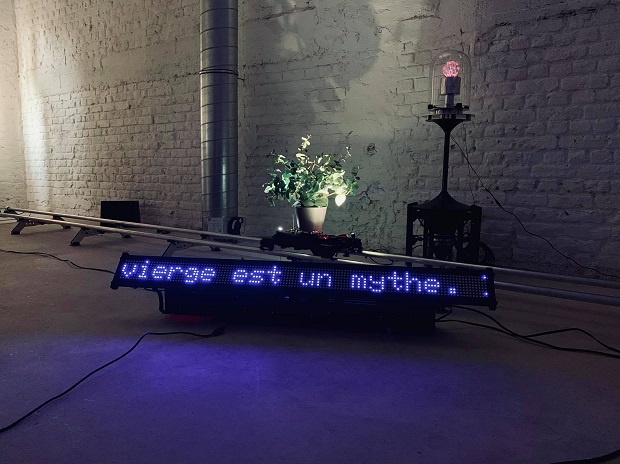
As a family-friendly show, it’s an interactive dive into digital society, as thought-provoking as it is diverting. From the relationship between humans and robotics, the influence of artificial intelligence and algorithms and the world of deepfakes, visitors can discover this hidden and sometimes intimidating world via a series of works and installations by artists and designers, many of them internationally renowned.
The striking contemporary building is itself worth a detour. Formerly Belgium’s pavilion for the 2015 World Fair in Milan, it’s an eco-friendly space-like structure in wood, steel and glass adorned with solar panels. The interior is light, airy and echoey, affording snatched views of the surrounding fortress and its panorama.
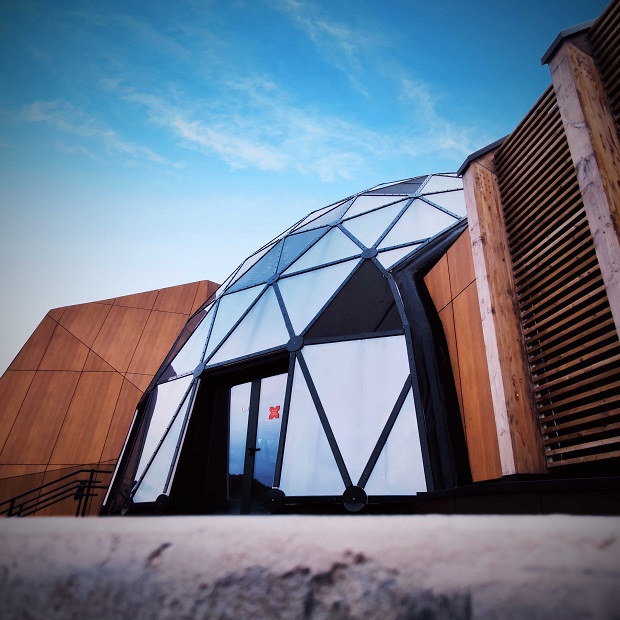
Now under the auspices of nonprofit Kikk, organiser of the annual international festival showcasing new technologies in Wallonia and further afield, Le Pavillon reinforces Namur’ growing identity as a smart city.
It also serves as an additional draw to the citadel, Namur’s prime tourist attraction. Occupying one end of the esplanade, the principle public space for festivals and events, it is strategically positioned next to the new cable car. Due to open in April, the aerial ride will link the citadel with the city-centre.
Multiple spaces
Le Pavillon is divided into three distinct spaces: a main temporary exhibition area that can also host workshops and events under its central dome; the Playground, a permanent place for children to explore digital innovations via interactive games and installations; and the Lab, which showcases digital technology in Wallonia.
In the current exhibition Humans/Machines, visitors are introduced on arrival to the concept of the uncanny valley. This is the degree to which a robot resembling a human being incites a disturbing and emotional response in the viewer. In a series of installations, visitors are confronted with examples, such as videos of Sophia, one of the most intelligent robots in the world, but also one of the most unsettling.
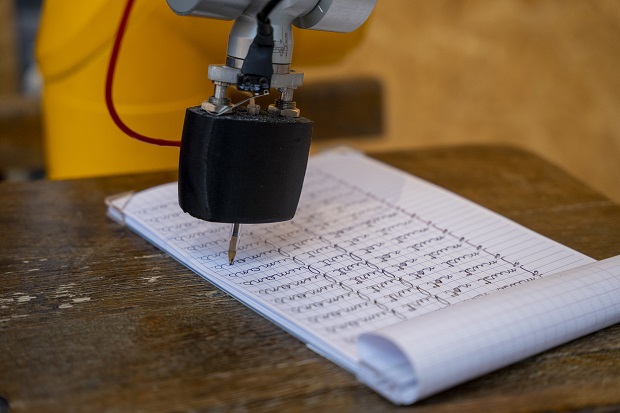
A contrasting work, The Punishment (pictured, above) by Filipe Vilas-Boas (FR), is an eye-catching robotic arm – one of the most frequently used in industrial automation – installed on an old-school desk and bench to execute pages and pages of punishment lines. ‘I must not hunt humans’ is its eerie penance; raising questions over the future of robots in our lives and who exactly is in control in the human-machine relationship.
Further inside, a series of cordoned areas contain installations aimed at demystifying AI technologies. Narciss, 2018, by Christian Mio Loclair (DE), is a sculpture composed of a computer, screen, camera and mirror, that uses an algorithm to analyse its own identity. Taking the two elements of binary language, it raises questions about the limits of perception and reflection, fundamentally human characteristics.
A number of installations shine a critical light on new technology to raise awareness of digital advances that are too fast for regulators to control. Canny AI’s video of world leaders all singing John Lennon’s peace anthem Imagine is a deepfake. AI technology replaces each leader’s voice with new dialogue, synchronized with their mouth and face. It serves as a warning that you cannot believe all that you see and hear.
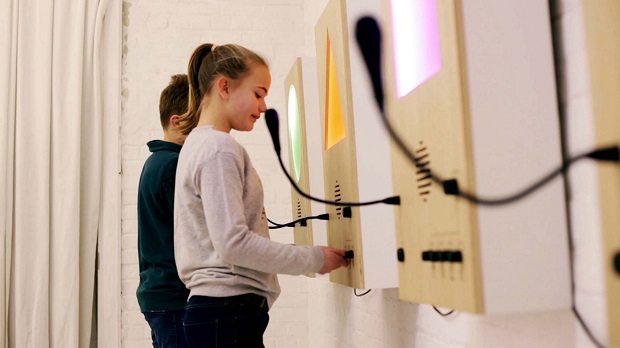
The Playground
Spiral stairs lead down to this fun area, intended as a permanent collection of entirely interactive installations that cannot fail to amuse all ages. Starfield distorts a Windows screensaver via a swing that takes you into the starry night at your own rhythm, reinforcing the notion of humans maintaining control of their environment.
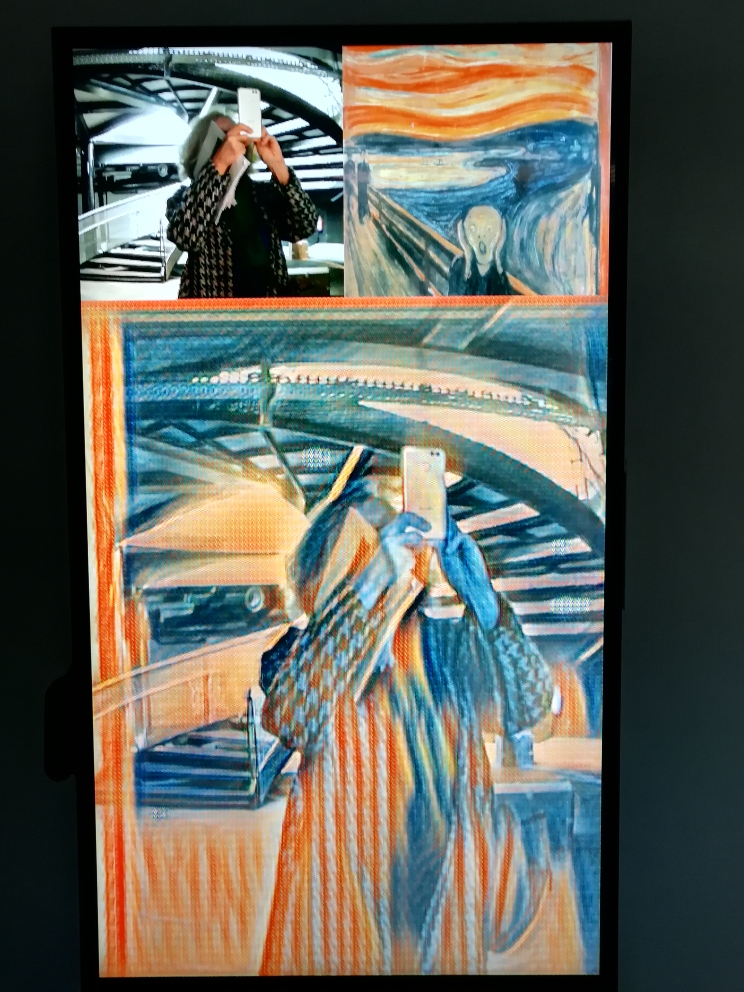
One of the most amusing exhibits is a personal interaction with famous paintings by Van Gogh, Picasso and Munch, among others. Style Transfer Mirror (pictured, above) by Gene Kogan (US), captures your image via a webcam and incorporates it into the famous works, thanks to AI.
After the sometimes disturbing experiences in the main section, the light-hearted relief in the Playground is a reminder of Le Pavillon’s mission to demystify technology for all the family, reminds exhibition and Kikk festival curator Marie du Chastel.
“Providing the keys to understanding how AI works can avoid manipulation as well as reveal its limits,” she says.
Guides are positioned around the exhibition to help explain the works to visitors, and accompanying texts are in French, Dutch and English.
The public is invited to record impressions and remarks on a large blackboard at the entrance, all aimed at shaping future shows.
Le Pavillon Pop-Up
Until 13 June
Namur Citadel esplanade
Tickets (reservation necessary): €8 (full price), children six and under free
Photos: Main image (c) Philippe Pireaux; Le Pavillon (c) Stephane Gueulette











